摘要
城市空间特色是一个城市在长期历史发展与演变过程中,经历时空的磨砺而呈现出的自然、历史、文化及社会动态的综合特征,是一个城市区别于其他城市的物质特征.随着我国城市建设的加快,为保证城市合理、科学的运作,城市规划产生一定程度的趋同化,城市的个性在逐步丧失.为了提升城市竞争力,城市原本的自然与历史文化特色被取代,"千城一面"成为新时期我国最大的城市问题.因此,基于城市本源特色的空间规划成为热点研究课题.
本研究剖析了城市的特色空间资源提炼城市的物质空间特色和非物质空间特色,包括城市自然生态资源、城市经济产业资源、城市历史文化资源等,结合城市的空间格局,从宏观层面、中观层面和微观层面三个层面系统地提出城市空间特色塑造策略.论文结合城市空间格局和城市特色资源现状,提出阜阳市城市空间特色规划策略.
论文首先明确了论文研究方向,在现实背景下选择城市空间特色研究作为研究内容,并明确其研究目的和研究意义,详述了新时期城市空间特色研究的必要性.为了进一步从理论上和实践上梳理城市空间特色的相关内容,整理了国内外关于城市特色、城市空间设计、城市空间保护及改造等相关理论和实践研究,并从中汲取经验,确定了本文的研究方法和技术路线.本文从概念、属性上对城市空间特色做出界定,明确本文的研究对象和目标,继而梳理了相关原理,包括城市系统论、关联耦合理论和城市意象.根据基础理论的研究,本文解析了城市空间特色规划,提出影响因素、规划构建原则和方法,并总结国内外城市空间特色规划的成功案例,从中分析城市空间特色规划的相关方法及策略,从而对阜阳市城市空间特色规划策略的制定提供依据和参考.为了研究城市空间特色,本文选取阜阳市作为研究对象,根据阜阳市城市地理区位、自然环境、历史文化和社会经济概况,提出阜阳市的自然特色资源、文化特色资源、社会特色资源,并根据资源特质将其分为唯一性特色资源、优势特色资源和一般特色资源.此外,本文对阜阳市城市空间格局现状进行深入解读,从城市空间格局、城市片区要素、现状要素和点状要素深入探讨城市空间结构的特征和问题,并结合城市特色资源,提出城市空间特色的发展方向.根据阜阳市未来的城市发展规划,制定合理的、有针对性地城市空间特色规划框架,并根据框架内容,从宏观、中观和微观三个层次分别提出阜阳市城市空间特色的规划策略.着重突出阜阳市城市空间特色,并提出阜阳市城市空间特色规划的策略,主要包括提出阜阳市城市空间特色规划框架、规划布局和建设实践.
关键词:城市空间特色,特色资源分级,空间特色定位,规划策略,阜阳市
Abstract
Urban spatial characteristic is the comprehensive characteristic of a city's natural, historical, cultural and social dynamics, which is different from other cities in the process of long-term historical development and evolution, and is characterized by natural, historical, cultural and social dynamics. With the acceleration of urban construction in China, in order to ensure the rational and scientific operation of the city, the urban planning has a certain degree of assimilation. In order to enhance the competitiveness of cities, the original natural and historical characteristics of the city have been replaced, and the "Same Imagine of the cities" has become the biggest urban problem in China in the new era. Therefore, spatial planning based on the characteristics of the city has become a hot research topic.
This study analyzes the characteristics of the city's characteristic spatial resources to extract the characteristics of the city's physical space and non-physical space, including urban natural and ecological resources, urban economic and industrial resources, urban historical and cultural resources, combined with the spatial pattern of the city, putting forward the shaping strategies of urban spatial characteristics from the macro-level, meso-level and micro-level three levels of the city system. This paper will take Fuyang as the research object, combined with the current situation of urban spatial pattern and urban characteristic resources, and put forward planning strategies of Fuyang's urban spatial characteristics.
Firstly, the paper clarifies the research direction, chooses the study of urban spatial characteristics as the research content under the realistic background, and clarifies its research purpose and significance, elaborates the necessity of the study of urban spatial characteristics in the new period. In order to further comb the related contents of urban spatial characteristics in theory and practice, this paper collates the related theories and practical research on urban characteristics, urban spatial design, urban spatial protection and transformation at home and abroad, draws experience from them, and determines the research methods and technical routes of this research. This paper defines the characteristics of urban space from the concepts and attributes, clarifies the object and objectives of this study, and then combs the relevant principles, including urban system theory, relevance coupling theory and urban image. According to the research of basic theory, this paper analyzes the urban spatial characteristic planning, puts forward the influencing factors, the principles and methods of planning construction, and summarizes the successful cases of urban spatial characteristic planning at home and abroad, analyzes the relevant methods and Strategies of urban spatial characteristic planning, so as to carry out the strategy of urban spatial characteristic planning and provide basis and reference for making planning strategies in Fuyang. In order to study the characteristics of urban space, this paper chooses Fuyang as the research object. According to the geographical location, natural environment, historical culture and social economic situation of Fuyang it puts forward the natural characteristic resources, cultural characteristic resources and social characteristic resources of Fuyang, and divides them into unique characteristic resources, advantage characteristic resources and general characteristic resources according to the feature of resources. In addition, this paper makes an in-depth interpretation of the current situation of urban spatial pattern in Fuyang, probes into the characteristics and problems of urban spatial structure from the aspects of urban spatial pattern, urban area elements, current situation elements and point-like elements, and puts forward the development direction of urban spatial characteristics combined with urban characteristic resources. According to the future urban development planning of Fuyang, a reasonable and targeted urban spatial planning framework is formulated. According to the framework, the planning strategies of urban spatial characteristics of Fuyang are put forward from the macro, meso and micro levels. This paper focus on highlighting the characteristics of urban space in Fuyang, and put forward the strategy of urban space planning in Fuyang, mainly including the urban space planning framework, planning layout and construction practice.
Keywords: urban spatial characteristic, characteristic resources classification, spatial characteristics positioning, planning strategies, Fuyang
目 录
摘 要................................................................................................................................I
Abstract........................................................................................................................... III
第 1 章 绪 论................................................................................................................ 1
1.1 课题来源............................................................................................................... 1
1.2 研究背景............................................................................................................... 1
1.3 研究的目的及意义.............................................................................................. 2
1.3.1 研究目的......................................................................................................... 2
1.3.2 研究意义......................................................................................................... 2
1.4 国内外相关研究...................................................................................................3
1.4.1 国外研究现状................................................................................................3
1.4.2 国内研究现状................................................................................................5
1.4.3 国内外相关研究评析................................................................................... 7
1.5 研究内容与方法...................................................................................................7
1.5.1 研究内容........................................................................................................7
1.5.2 研究方法........................................................................................................8
1.5.3 研究框架........................................................................................................9
第 2 章 相关理论与研究基础..................................................................................... 11
2.1 城市空间特色概念与属性................................................................................. 11
2.1.1 城市空间特色概念...................................................................................... 11
2.1.2 城市空间特色属性..................................................................................... 12
2.2 城市空间特色规划研究基础.............................................................................16
2.2.1 城市系统论...................................................................................................17
2.2.2 关联耦合理论...............................................................................................18
2.2.3 城市意象.......................................................................................................20
2.3 城市空间特色规划构建..................................................................................... 20
2.3.1 城市空间特色规划的影响因素................................................................. 21
2.3.2 城市空间特色的规划原则..........................................................................25
2.3.3 城市空间特色的规划方法..........................................................................26
2.4 国内外城市空间特色规划相关实践................................................................ 27
2.4.1 西班牙毕尔巴鄂市...................................................................................... 28
2.4.2 江苏省南通市...............................................................................................30
2.5 本章小结............................................................................................................. 32
第 3 章阜阳市城市空间特色的现状解读.................................................................. 34
3.1 城市概况.............................................................................................................. 34
3.1.1 城市地理区位...............................................................................................34
3.1.2 自然环境.......................................................................................................35
3.1.3 历史文化.......................................................................................................36
3.1.4 社会经济.......................................................................................................36
3.2 特色资源及分级..................................................................................................37
3.2.1 自然特色资源...............................................................................................38
3.2.2 文化特色资源...............................................................................................40
3.2.3 社会特色资源...............................................................................................42
3.2.4 特色资源分级...............................................................................................43
3.3 空间格局现状及分析......................................................................................... 46
3.3.1 空间格局概况..............................................................................................46
3.3.2 片区要素.......................................................................................................48
3.3.3 线状要素.......................................................................................................50
3.3.4 点状要素.......................................................................................................52
3.3.5 问题分析.......................................................................................................53
3.3.6 空间特色分析...............................................................................................57
3.4 本章小结............................................................................................................. 59
第 4 章阜阳市城市空间特色规划策略...................................................................... 60
4.1 整体城市发展定位............................................................................................. 60
4.1.1 阜阳市城市发展定位.................................................................................. 60
4.1.2 阜阳市城市空间特色定位..........................................................................61
4.2 宏观层面.............................................................................................................. 63
4.2.1 城市空间结构...............................................................................................63
4.2.2 环水空间特色...............................................................................................66
4.2.3 城市特色轴线...............................................................................................69
4.2.4 文脉特色塑造...............................................................................................71
4.3 中观层面.............................................................................................................. 74
4.3.1 空间组团.......................................................................................................74
4.3.2 水网布局.......................................................................................................80
4.3.3 生态建设.......................................................................................................82
4.3.4 交通发展.......................................................................................................86
4.3.5 标识系统.......................................................................................................87
4.4 微观层面.............................................................................................................. 88
4.4.1 滨水空间.......................................................................................................88
4.4.2 节点地标.......................................................................................................90
4.4.3 城市建筑.......................................................................................................91
4.4.4 开放空间.......................................................................................................93
4.5 本章小结............................................................................................................. 94
结 论............................................................................................................................. 95
参考文献.........................................................................................................................96
哈尔滨工业大学学位论文原创性声明和使用权限............................................... 100
致 谢........................................................................................................................... 101
个人简历.......................................................................................................................102
第1章绪论
1.1课题来源
本课题来源于工作实践并结合自己的体会,与导师共同商定了研究方向.
1.2研究背景
从国内外城市发展的普遍规律来看,公众对城市空间品质和特色的关注与城市的发展阶段密切相关.如1900年到1920年这20年间,美国的城市化率从39.7%上升到51.2%,这一阶段是美国城市化快速发展阶段,而"城市美化运动"也正是在这一时段兴起[1].另外,学界通过大量的对比研究发现,城市化率达到40%以上时,公众对于城市空间品质和特色的需求明显增加[2].
改革开放以来,我国城市化率由1980年的19.39%上升到2016年的57.35%,平均每年增加一个百分点以上.可以看出,公众的审美观念也随之提升,公众对城市品质也有了更高的要求[3].从国家层面来看,城市空间特色规划日趋受到重视.从80年代开始,我国就不断探索城市空间特色的规划路径,并持续开展了一系列实践工作.到90年代晚期,在我国开始兴起了"城市美化运动",许多城市都为建设纪念性和标志性的景观工程而大兴土木,普遍采用巴洛克式的建设风格,意图展现城市的宽广、气派和街景立面的装饰.这种城市实践一味地追求建筑单体的"地标性"或局部景观的美观效果,忽视了城市空间的整体性特色的规划.随着城市规划理念和建设思潮的推陈出新,人们逐渐认识到城市整体空间特色规划的重要性.2014年《国家新型城镇化规划(2014~2020年)》发布,它提倡"发展有历史记忆、文化脉络、地域风貌、民族特点的美丽城镇",对城市空间特色的提炼与保护、城市个性的凸显与塑造提出了新的要求.因此,现阶段研究符合我国国情和城市建设需求的城市空间特色规划方法十分必要.
阜阳地处中原城市群、徐州都市圈、武汉都市圈、合肥经济圈的围合区,是大京九经济带上的重要城市,同时也是长三角产业转移承接地,是安徽省的西北门户城市,具有承东接西、呼南应北的区位交通优势,是安徽三大综合性区域交通枢纽之一.目前,新一轮《阜阳市城市总体规划(2012~2030)》获批,阜阳城市性质、人口规模、空间结构、用地布局、综合交通、绿地景观风貌等内容已基本确定,阜阳一座现代化大城市的建设框架已全面拉开.但在近几年城市建设的过程中,由于缺少对城市空间特色方面的塑造和保护,阜阳城市的一些特色框架印迹与历史脉络片段正在遗失.因此,本文梳理了阜阳市自然山水资源、历史人文资源和现代风貌资源等空间特色资源,根据阜阳市城市空间结构现状,从片区要素、现状要素和点状要素三个层面解析了阜阳市的空间形态特色,并由此提出城市空间特色规划的框架结构,从阜阳市城市空间特色定位、特色结构模式和空间形态发展三个层面提出城市空间特色规划的策略,为未来城市发展中的空间特色塑造提供决策依据.
1.3研究的目的及意义
1.3.1研究目的
本研究是以阜阳市城市空间特色规划为题,旨在结合国内外理论及实践的基础上,剖析城市空间特色的内涵、构成要素和塑造策略等,并探讨城市特色资源及空间结构形态的内在联系,并由此研究城市空间特色规划策略.本研究对阜阳市城市空间资源进行了系统的分类和梳理,从人本性的角度,为阜阳城市空间特色规划提供了理论和实践依据.本研究预期实现以下两个目标:
(1)理论基础研究目标
在总结国内外城市空间特色研究成果的基础上,明确城市空间特色的塑造原则、规划体系及发展方向,为未来城市空间特色规划提供理论依据.
(2)规划实践研究目标
提出阜阳市城市空间特色存在的主要问题,并从城市设计角度出发提出城市空间特色规划的框架结构,并从空间特色定位、空间特色结构模式和空间形态要素引导三个层面提出阜阳市城市空间特色规划的实施策略.
1.3.2研究意义
1.3.2.1理论意义
本文通过对国内外的研究理论进行对比分析,确定适合我国国情的城市空间特色规划方法和理论.在此基础上,解析城市空间特色规划在不同层次的城市规划中起到的作用,对应分析其与规划体系的内在联系,丰富我国现有的城市规划体系,为城市空间特色规划提供理论依据.为了进一步提升城市空间特色规划的整体性,本研究基于城市设计的方法,深入解析城市资源及空间形态,并以此为基础由点及面的构建城市空间特色规划的框架结构.
1.3.2.2实践意义
阜阳地处黄淮海平原南端、淮北平原的西部,近万平方公里的广袤大地上蕴含着丰富的自然生态资源和历史人文资源,并在新一轮总体规划中确定为皖豫省际区域性中心城市,目前已具备较为完善的基础设施建设和城市空间建设条件.本研究针对阜阳市现状情况进行全面调查,梳理阜阳市城市特色资源(包括自然资源、文化资源和社会经济资源等)以及城市空间格局现状,由此从城市空间特色定位、城市特色结构模式及城市空间形态要素引导三个层次提出城市空间特色规划策略.本研究有较强的实践指导意义,同时能够推进城市总体规划和城市风貌规划中空间特色的专项规划发展,具有较强的现实意义.
1.4国内外相关研究
城市空间特色是伴随城市建设、城市空间规划而产生的一个研究方向.随着城市建设的不断完善和城市品质的不断提升,城市空间特色愈发受到关注.
城市空间特色是城市定位和优势的空间物质载体,是城市空间风貌的直观展现,它能够综合反映城市在某一段时空背景下的自然生态资源、城市建设资源和历史人文资源.城市空间特色规划在不同国家、不同时期展现出不同的定位和侧重点.总体来说,国外城市空间特色都集中在自然生态、都市风貌和历史人文三个方面,并侧重于从城市生态环境构建、城市开放空间塑造、城市文化符号凝练和城市风貌规划等四个方面展开.
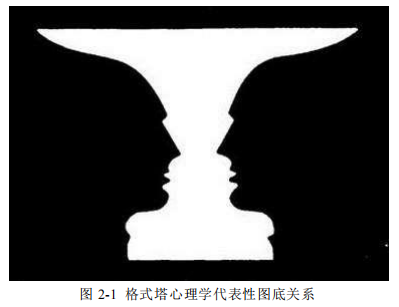
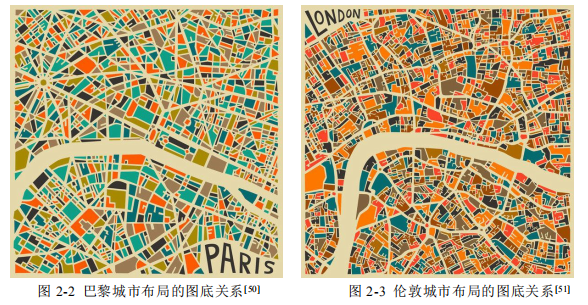
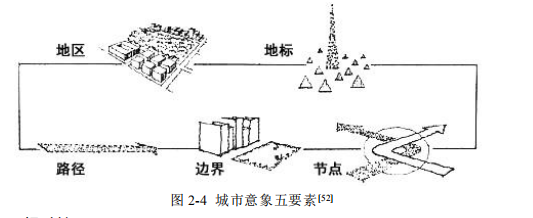
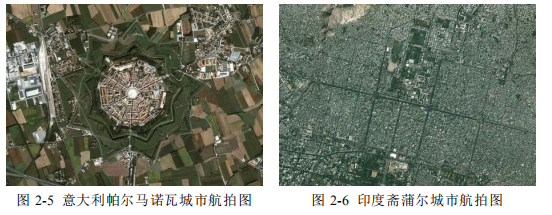
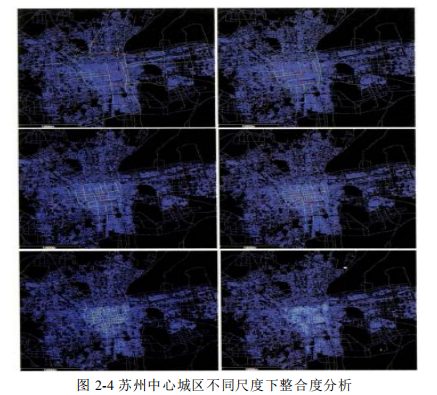
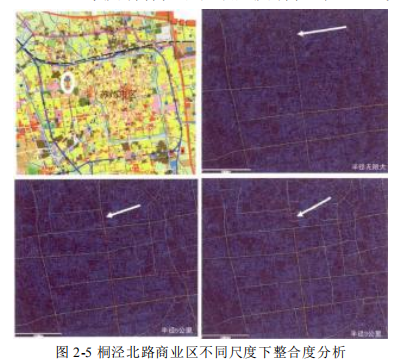

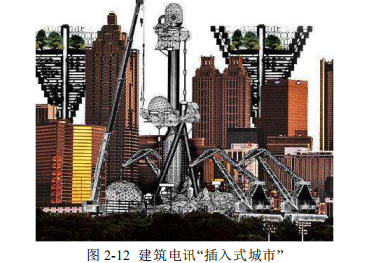
…………由于本文篇幅较长,部分内容省略,详细全文见文末附件
结论
在国内快速建设发展的大潮中,城市空间在模式化的建设过程中逐渐丧失原本的空间特色,削弱了城市之间的相对性差异.城市空间特色是在城市特色资源与空间结构交织过程中产生的独特特征.城市空间特色规划在未来城市发展与定位过程中将起到核心作用.本文通过对阜阳市现有特色资源与城市空间结构进行调研分析,运用城市系统论、关联耦合论和场所理论解析了阜阳市城市空间特色规划的必要性、影响要素、构建原则和方法,对阜阳市未来城市空间特色建设以及充分发挥城市特色资源具有一定的指导意义.通过研究得出以下结论:
(1)通过界定城市空间特色的概念和属性,从整体性、相对性、客观性和主观性四个方面明确城市空间特色的属性特征.根据基础理论研究,本文确定了城市空间特色构建的自然环境要素、历史人文要素和社会经济要素三方面影响因素,并提出城市空间特色规划的原则和方法.
(2)本文收集并整理阜阳市城市地理区位、自然环境、历史文化和社会经济四方面基础资料,并根据阜阳市城市特色资源将其分为唯一性特色资源、优势特色资源和基本特色资源,针对不同等级的资源可以相应采取不同的建设模式.
(3)本文对阜阳市城市空间格局进行系统分析,从片区要素、线状要素和点状要素三个层级分析城市空间,并对城市空间格局的现存问题进入深入剖析.根据以上研究,本文着重分析了阜阳市城市空间特色的重点建设方向,并提出城市空间特色规划方向.
(4)根据阜阳市城市发展定位和城市空间格局,提出了阜阳市城市空间特色定位,并从宏观、中观和微观三个层次分别提出城市空间特色规划策略.在宏观层面上,要构建阜阳市城市空间特色的规划框架;在中观层面上,阜阳市城市空间特色规划要确定城市特色空间布局;在微观层面,要加强城市空间特色建设的落地力度,建设具有特色的滨水空间、城市节点地标、建筑风格具有特色的城市建筑和人性化的公共开放空间.
参考文献
[1] 江泓, 张四维. 生产、复制与特色消亡--"空间生产"视角下的城市特色危 机[J]. 城市规划学刊, 2009,(04):40-45.
[2] 张晓莉. 北京市城市设计导则运作机制思辨[J]. 规划师, 2013,(08):27-32.
[3] 段进. 城市空间特色的符号构成与认知──以南京市市民调查为实证[J]. 规 划师, 2002,(01):73-75.
[4] Zhang P, Ren X, Chen L, et al. Spatial Characteristics and Complex Analysis:A Perspective from Urban Networks of Central Plains Economic Region[J]. Journal of Henan University, 2014,(10):7-13.
[5] 俞孔坚, 吉庆萍. 国际"城市美化运动"之于中国的教训[J]. 中国园林. 2000, (02):32-35.
[6] 俞孔坚, 吉庆萍. 警惕:"城市美化运动"来到中国[J]. 城市开发. 2001, (12): 4-6.
[7] 杨俊宴, 胡昕宇. 城市空间特色规划的途径与方法[J]. 城市规划, 2013, 37 (06): 68-75.
[8] Wang C. Identification of Inter-urban Container Transport Hubs and Their Spatial Characteristics:A Case Study of Railway Transportation in China[J]. Acta Geographica Sinica, 2010, 65(10):1275-1286.
[9] (美)伊恩·伦诺克斯·麦克哈格. (译)黄经纬. 设计结合自然[M]. 天津大学出 版社, 2006: 8-9.
[10] 埃利尔·沙里宁. 城市:它的发展、衰败与未来[M]. 芬兰出版社, 1943:12-13.
[11] 徐从淮. 行为空间论[D].天津大学,2005: 27-28.
[12] Dong G. Comparing Chinese and the Western Urban Spatial Characteristics[J]. New Architecture, 1997, (05): 9-14.
[13] 杨保军, 朱子瑜, 蒋朝晖, 魏钢, 张佳. 城市特色空间刍议[J]. 城市规划, 2013, 37(03):11-16.
[14] Liu H, Xie T W. Study of intensive urban land use under urban spatial expansion characteristics: a case study of Fuzhou city[J]. Journal of Fuzhou University, 2014, (09): 23-27.
[15] Su Q. Travel demand management policy instruments, urban spatial characteristics, and household greenhouse gas emissions from travel in the US urban areas[J]. International Journal of Energy Economics & Policy, 2017,7(3):157-166.
[16] (美)E.N 培根. 黄富厢,朱琪编译. 城市设计[M]. 北京: 中国建筑工业出版 社, 1989: 11-13.
[17] Park, Hana, Park. Vibrant Traditional Markets in Small Residential Neighborhoods - A Case Study of their Urban-Spatial Characteristics in Gwanak-gu District, Seoul -[J]. Journal of the Architectural Institute of Korea Planning & Design, 2017:33.
[18] C. Berger, J. Rosentreter, M. Voltersen. Spatio-temporal analysis of the relationship between 2D/3D urban site characteristics and land surface temperature[J]. Remote Sensing of Environment, Volume 193, May 2017, Pages 225-243
[19] 清华大学营建系 1951 年 10 月译. 雅典宪章. 建筑师. 总第四期.
[20] Lee D, Oh K. Classifying Urban Climate Zones Based upon Statistical Analysis of Urban Spatial Characteristics[J]. International Journal of Environmental Science & Development, 2016, 7(11):821-826.
[21] [美]里查·科林斯,伊丽莎白·瓦特斯,布鲁斯·道森着,邱文杰,陈宇进译. 旧 城再生-美国都市成长政策与史迹保存[M]. 台北: 创兴出版社有限公 司, 1997: 5-6.
[22] Harriet Deaeon. Intangible Heritagein Conservation Management Planning[J]. International Joumalof Heritage Studies, 2009(5): 68-70.
[23] Jing L I, Zhang P Y, Guo M, et al. Spatial-temporal Characteristic of Urban Land Expansion in Harbin and Driving Mechanism Analysis[J]. Urban Environment & Urban Ecology, 2010, 23(6):1-4.
[24]Yang S, Wang S, Qiang Y, et al. Urban Spatial Morphology Characteristic and Its Spatial Differentiation of Mining City in China[J]. Areal Research & Development, 2012.
[25] Choi D J, Yong C S. A Spatial Statistical Approach on the Correlation between Walkability Index and Urban Spatial Characteristics -Case Study on Two Administrative Districts, Busan-[J]. Journal of the Korean Society of Surveying Geodesy Photogrammetry & Cartography, 2014, 32(4_1):343-351.
[26] [英]史蒂文?蒂耶斯德尔等着.张玫英等译. 城市历史街区的复兴[M]. 中国 建筑工业出版社, 2006: 33-36.
[27] 张春阳, 颜益辉. 保护传统街巷空间特色,促进健康城市发展--以广州市 西关为例[J]. 城市建筑, 2018,(09):20-22.
[28] 李伟, 赵艳. 基于天津地域文化艺术特色的城市室外公共空间适老化分析[J]. 城市建筑, 2018,(09):23-26.
[29] 昆明:下发《关于加强城市空间管控和特色风貌塑造的指导意见》[J]. 城市 规划通讯, 2018,(05):11.
[30] 朱东风. 城市特色的认知、表达与规划探讨--以江苏省为例[J].城市规划, 2016, 40(07):65-73.
[31] 吴冠秋, 钱云. 中部地区小城市特色空间认知方法研究--以安徽泗县为 例[J]. 规划师, 2018,34(02):61-66.
[32] 陈雨, 伍敏, 刘中元, 李鹏飞. 历史文化城市空间特色规划编制方法探索 --以黄山市实践为例[J]. 城市规划学刊, 2017(S2):92-97.
[33] (德)恩斯特·卡西尔. 人论[M]. 甘阳译. 上海:上海译文出版社,2004: 5-6.
[34] 赵云伟.文化全球化与当代城市文化特色浅论[J].规划师,2002(02):8-12.
[35] 张嘉琦. 城市建设要展现世纪中叶的风貌-访美归来的启示[J]. 城市史研 究, 1996,(01):197-199.
[36] 刘冰冰,王泽坚.新加坡和纽约特色风貌地区规划管理经验及对深圳的启示 [J].国际城市规划,2018(09):9-26.
[37] [英]汤因比. 文明经受考验[M]. 沈辉等译. 杭州:浙江人民出版社,1998: 15-16.
[38] 赵明明. 近现代成都旧城文脉空间演变及当代有机建构策略[D].西南交通 大学,2014: 41-44.
[39] 王一,卢济威.城市更新与特色活力区建构--以上海北外滩地区城市设计 研究为例[J].新建筑,2016(01):37-41.
[40] 陈涛,葛鹏飞.云南少数民族地区城市特色景观管理研究--以丽江市古城 区为例[J].特区经济,2016(08):147-149.
[41] 《 江 苏 省 城 乡 空 间 特 色 战 略 规 划 》 获 国 际 城 市 与 区 域 规 划 师 学 会 (ISOCARP)2017 年度"规划卓越奖"[J]. 江苏城市规划, 2017,(10):2.
[42] 杨俊宴, 胡昕宇. 城市空间特色规划的途径与方法[J]. 城市规划, 2013, (06):68-75.
[43] 季松, 李亮. 城市空间特色的提炼与规划--以常州为例[J]. 现代城市研 究, 2014, (08):43-48.
[44] 刘乃芳, 张楠. 多样性城市事件对城市空间特色的影响[J]. 城市问题,2011, (12):36-40.
[45] 阮仪三等. 江南古镇--历史建筑与历史环境的保护[M]. 人民美术出版 社, 2010.
[46] 单霁翔着. 走进文化景观遗产的世界[M]. 天津大学出版社, 2010: 27-29.
[47] 张松着. 历史城市保护学导论(第二版)[M]. 同济大学出版社, 2008: 34-36.
[48] 王承华, 杨宇, 谭伟. 从自然要素到共生网络--无锡市太湖新城水岸空 间专项城市设计探索[J]. 现代城市研究, 2016, (07):47-55.
[49] 吴冠秋, 钱云. 中部地区小城市特色空间认知方法研究--以安徽泗县为 例[J]. 规划师, 2018,34(02):61-66.
[50] Daniela C. Kalthoff, Thomas M?rs, Alexey Tesakov. Late Pleistocene small mammals from the Wannenk?pfe volcanoes (Neuwied Basin, western Germany) with remarks on the stratigraphic range of Arvicola terrestris[J]. Géobios,2006,40(5) : 67-69.
[51] 谢丰斋.12-14 世纪英国小城镇兴起初探[J].世界历史,2002(04):50-59+128.
[52] 凯文·林奇(方益萍, 何晓军译).城市意象[M].北京:华夏出版社,2001: 25-26.





